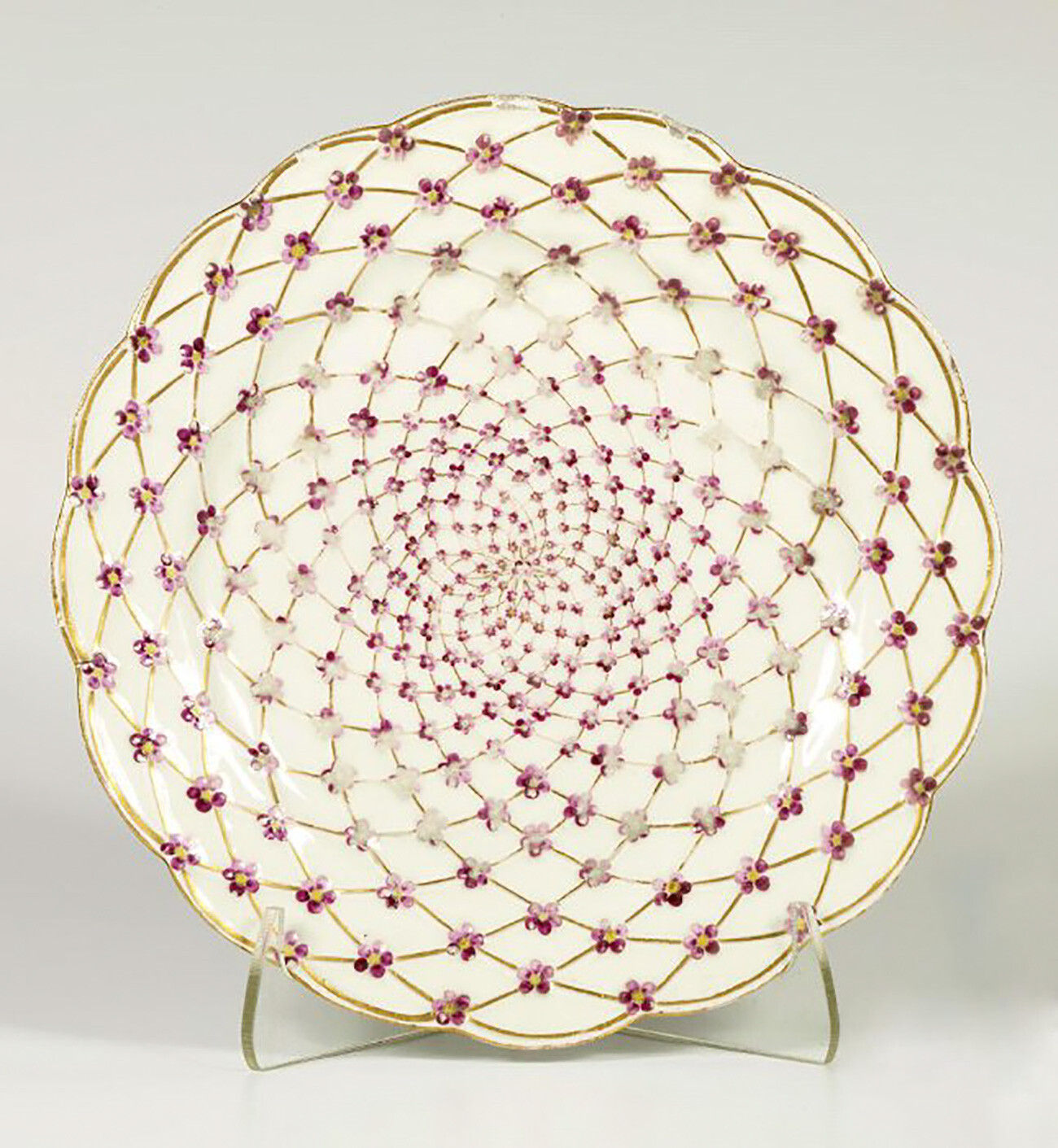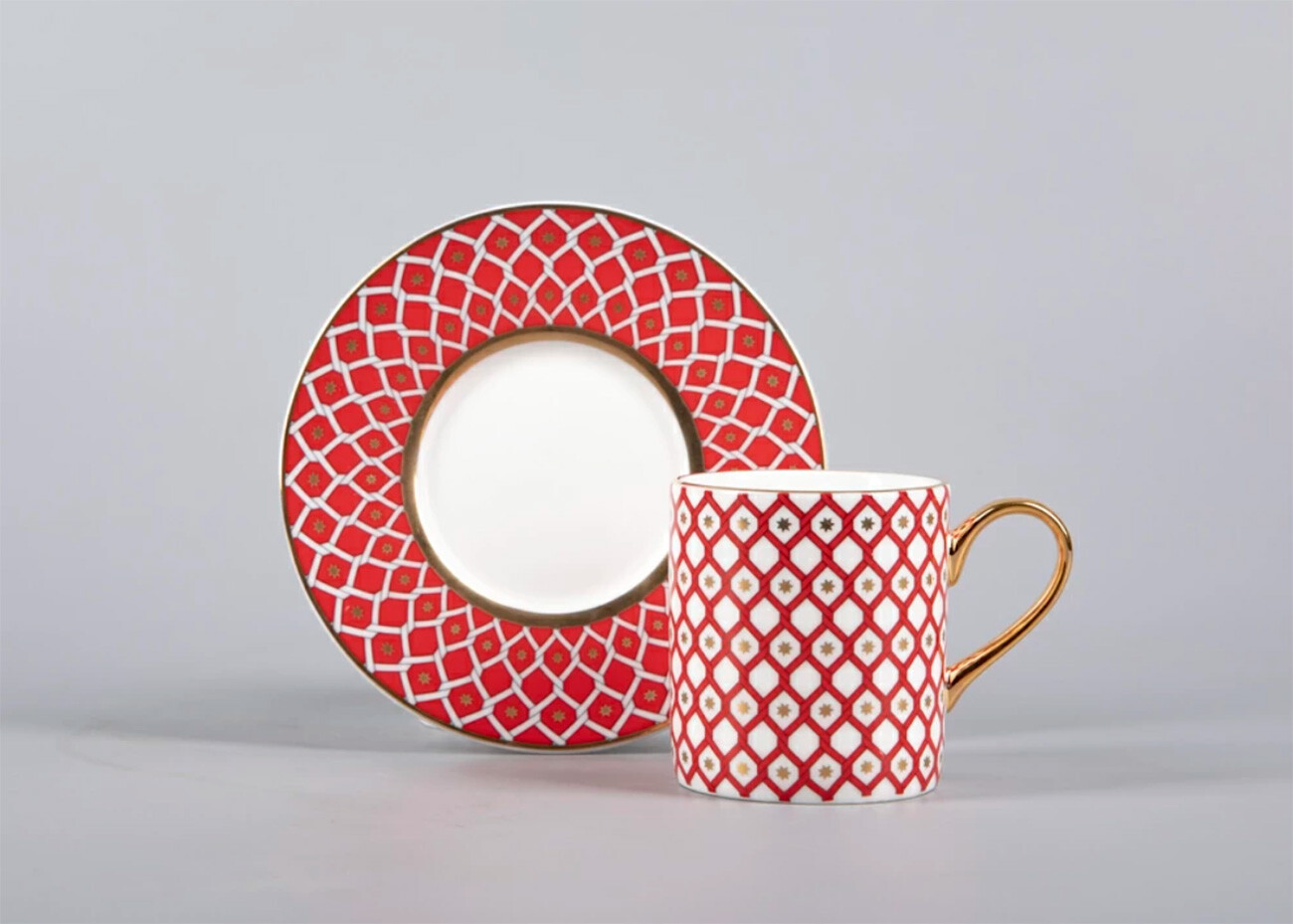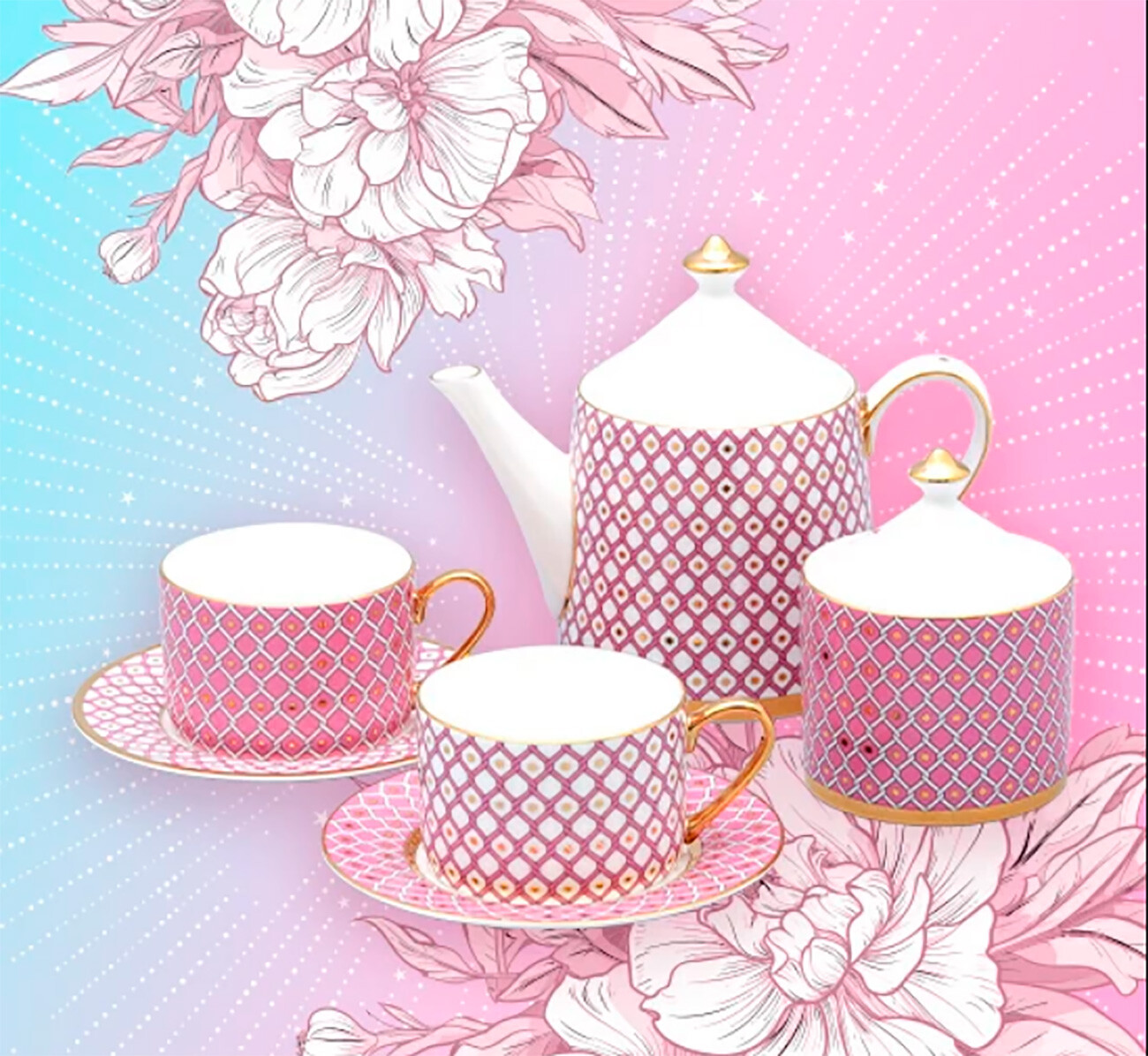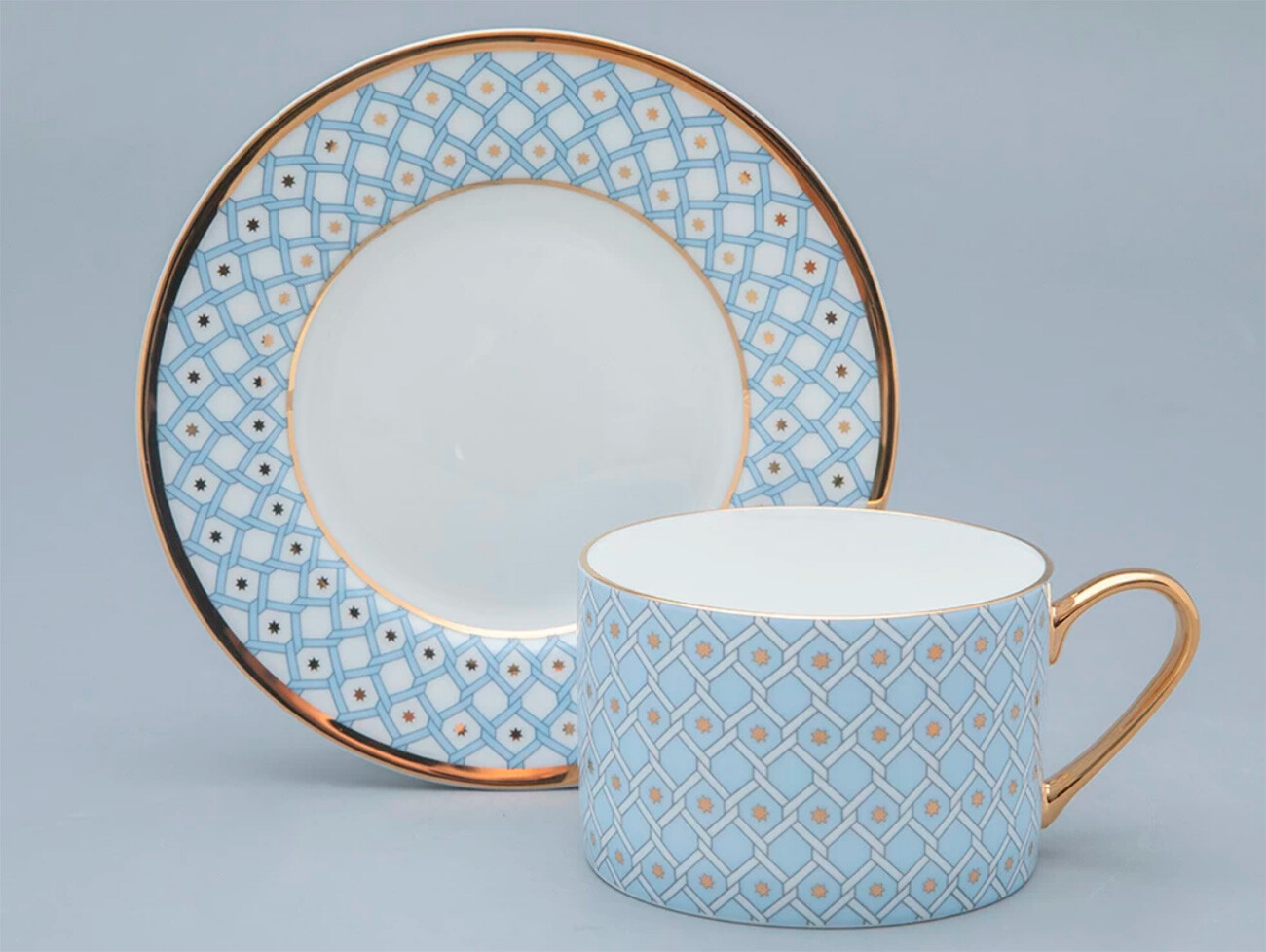The Imperial Porcelain Factory's artists have always responded to the changing fashions and demands of the times. The design of porcelain made all the way through French classical and Art Nouveau to avant-garde revolutionary porcelain. And, to this day, artists still come up with new shapes and designs (while still paying homage to historical drawings).
But, there are also some historical constants at the factory, such as the legendary ‘Cobalt net’, which has been produced for 80 years! This design is still popular today and a kind of “business card” of the factory. Vases, plates, saucers, candlesticks, decanters, sugar bowls, candlesticks, coffee pots, tea pairs — in total more than 100 different items are produced with this design.
Its idea was born during World War II. In 1944, the factory celebrated its 200th anniversary, just having been restored after two years of evacuation, which happened during the Siege of Leningrad. Artist Anna Yatskevich developed the geometric pattern ‘Cobalt net’, based on Empress Elizabeth Petrovna’s personal porcelain set.

Her Majesty's Own Set
The HermitageToday, the factory produces not only porcelain with the “Cobalt” grid, but also modern versions inspired by it — ‘Scarlett’, ‘Blues’, ‘Azure’ and others in different colors.

‘Scarlett’
Imperial Porcelain Factory
Pink ‘Blues’
Imperial Porcelain Factory
‘Azure’ collection
Imperial Porcelain FactoryDear readers,
Our website and social media accounts are under threat of being restricted or banned, due to the current circumstances. So, to keep up with our latest content, simply do the following:
If using any of Russia Beyond's content, partly or in full, always provide an active hyperlink to the original material.
Subscribe
to our newsletter!
Get the week's best stories straight to your inbox